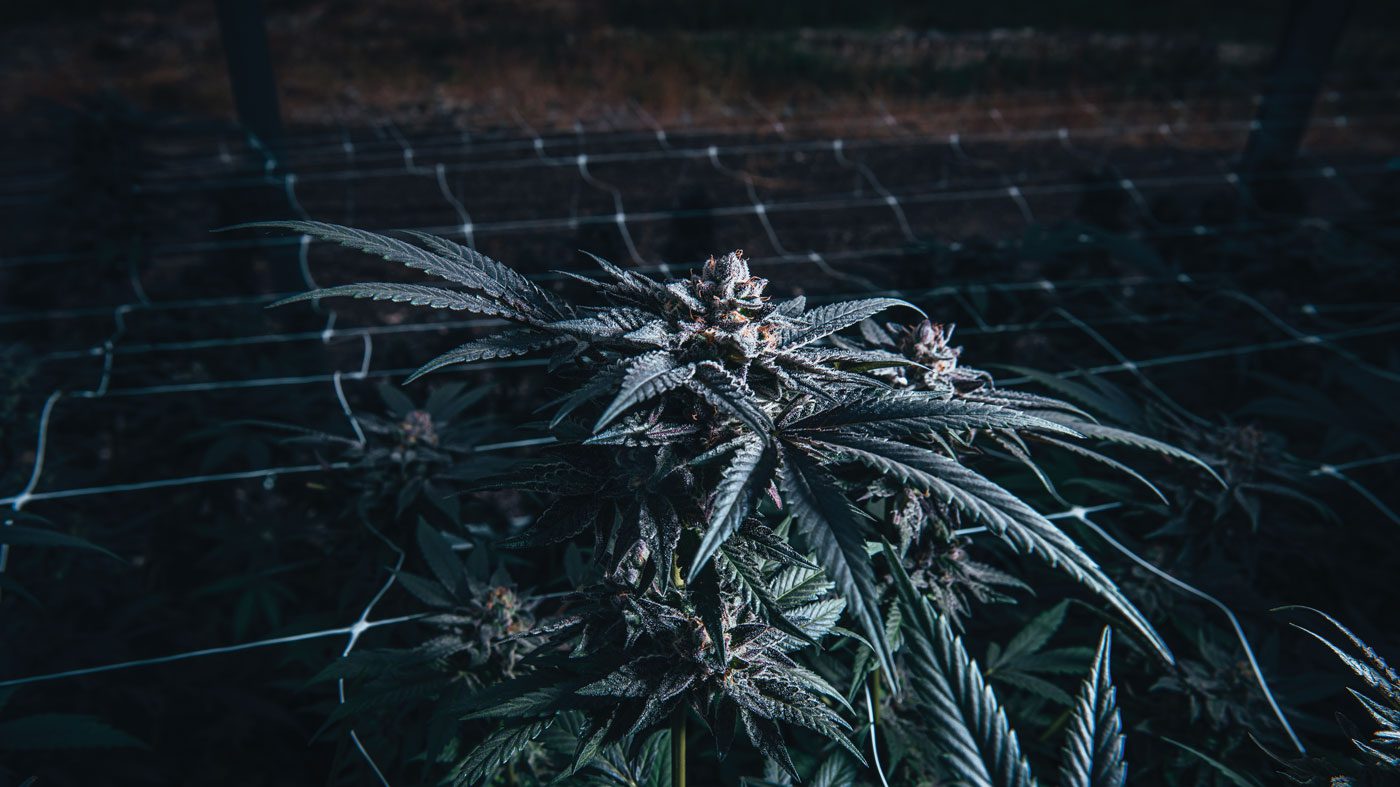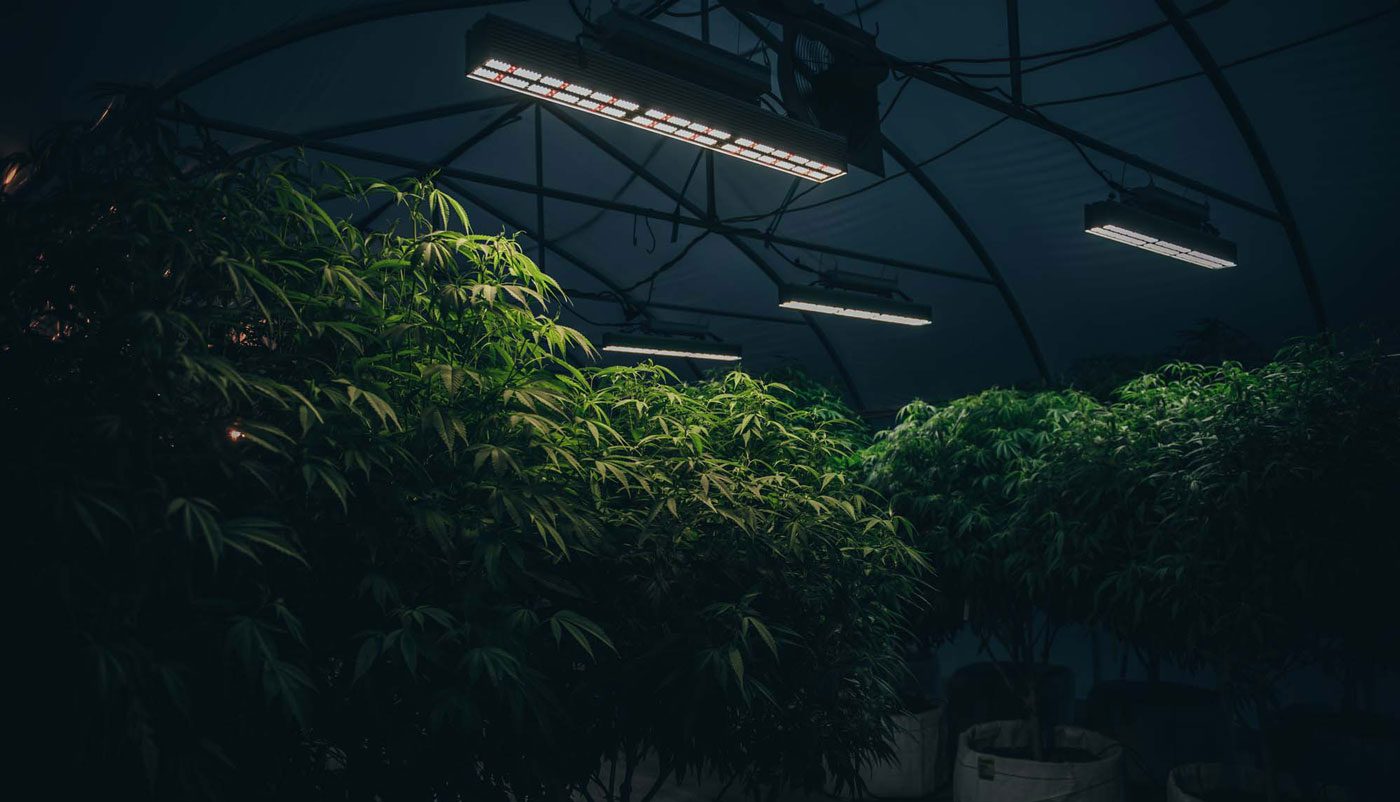Light dep, short for light deprivation, is a greenhouse growing method, specifically a light dep greenhouse technique, that initiates and maintains summer season flowering for cannabis, particularly light dep cannabis. The length of daylight versus darkness in a day fluctuates with the seasons. The winter solstice is the longest night and shortest day of the year. The nights then get progressively shorter, and the days get longer, until the summer solstice, which is the shortest night and longest day of the year. After that, the nights get longer until the winter solstice, and the cycle repeats.
Light deprivation techniques refer to artificially depriving the plants of light, or to state that more simply, exposing the plants to dark. While it is the same basic technique that indoor gardeners use, the term “light dep” is generally used to refer to artificially darkening a greenhouse with an opaque cover. “Light dep gives the farmer control of when they harvest as well the convenience of fresh flowers year round,” says Jonathan Valdman, president of Forever Flowering Greenhouses in Grass Valley, California.
The two points approximately midway between the two extremes are when daylight hours and nighttime hours become equal at about 12 hours each are known as the “equinoxes” (“equinox” is Latin for “equal night”). Between the summer solstice and the winter solstice is the fall equinox, and between the winter solstice and summer solstice is the spring equinox. These four dates are more commonly known as the first day of winter (the winter solstice), the first day of spring (the spring equinox), the first day of summer (the summer solstice), and the first day of fall (the fall equinox). The solstices for the northern and southern hemispheres are reversed — the winter solstice in the north is the summer solstice of the south.

Short Day Long Night in Light Dep Cannabis Cultivation
Cannabis, except for auto-flowering varieties, is photoperiod dependent for flowering, a trait crucial for light dep greenhouse cultivation. Specifically, it is known as a “short day” plant in the light deprivation cannabis community. This means that in nature it will grow through the summer, and then flower in the fall as the days get shorter, a principle exploited in light dep techniques. It would be technically more correct if it were called a “long night” plant, as it is the daily long uninterrupted dark period that triggers flowering in cannabis plants, not the length of the lit period. The term “short day” was coined after the phenomenon was observed, but before the processes involved were understood in the context of light deprivation techniques. It was a 50-50 chance and they happened to get it wrong. There are also “long day” plants such as spinach and lettuce, and “day neutral” plants such as tomatoes and strawberries, which respond differently than light dep cannabis to light cycles.
Phytochromes, crucial in light dep greenhouse management, are light-sensitive plant pigments that react to red and far-red light. They exhibit photochromism, a feature advantageous for managing light dep cannabis, which means that they switch between two states based on light exposure. One common example of photochromism are eyeglasses that darken in sunlight but turn more clear in lower light conditions. Phytochromes become active in the presence of red light, and inactive during the dark or when exposed to far-red light. Active phytochromes inhibit flowering in cannabis (and other “short day” plants), a key insight for light dep techniques. Long nights allow more of the phytochromes to become inactive, clearing the way for flowering in light dep cannabis cultivation. Cannabis doesn’t flower during the short nights of growth because not enough of the phytochromes have had time to become inactive. “Long day” plants also use phytochromes to control flowering, but in their case, instead of inhibiting flowering, active phytochromes activate flowering, demonstrating a difference in light dep techniques application.

Using A Lighting Schedule in Light Dep Greenhouses
Indoor gardeners and light dep cannabis cultivators use lighting schedules to control the state of the phytochromes and therefore flowering. Short (or no) dark periods for growth (18–24 hours lit, 0–6 hours dark) are used to emulate summer solstice lighting, meaning lots of active phytochromes, for growth. Longer dark periods of 12 hours lit, 12 hours dark are used to emulate fall equinox lighting (fewer active phytochromes) for flowering in light dep greenhouses. As most indoor grow spaces and light dep greenhouses are lightproof, initiating dark is usually as simple as turning the lights off for the desired length of the dark period and covering the plants isn’t needed in these controlled environments.
“Pulling tarps” is a term commonly associated with light dep techniques, and refers to the practice of pulling tarps over a greenhouse to block light from entering, a key practice in light dep cannabis cultivation. These days, the term is also used for any type of covering used on a structure to block light for the purpose of initiating flowering. By covering the greenhouse for a period of time either in the evening or morning (or both), the short nights of summer can be extended to match the longer nights of fall. This light deprivation technique causes early flowering, and allows for an earlier harvest. Climate conditions such as temperature, humidity, and air circulation will dictate if the cover can be left in place all night or if it should be removed once night falls in light dep greenhouses.

Benefits of Light Dep
Back in the days when supply was more limited, and people were more particular about smoking cannabis the same year as it was harvested, light dep allowed for a harvest when overall supply was at its low point for the year, right before the usual outdoor harvest, by which time many folks had used up their own supply.
In some climates, the growing season is short, and the fall weather is too harsh for proper flowering. By using light dep, cannabis can be flowered early so it has time to finish before the cold.
It can also be used to time flowering to occur during the most brightly lit months of summer, which may (or may not depending on exact conditions) offset the shorter growth period for the amount harvested.
When used in conjunction with supplemental lighting (to shorten or “ruin” the night), either growth or flowering can be initiated at any time during the year while still using natural lighting as the primary light source. The “gas lantern” light schedule for growth interrupts the night about midway through with an hour or so of light to activate some of the phytochromes, thereby preventing flowering. Between using extra light to prevent flowering during months of natural lighting with long nights (anytime but summer) and light dep to force flowering during months it would normally not flower (summer), cannabis can be grown at any stage during any month (other conditions such as temperature permitting).
The use of ropes, tracks, and counterweights can reduce the work needed to cover and uncover. The technique is scalable. It can be done by hand with a literal tarp and a simple frame over a single plant or used with multiple remote controlled greenhouses.
Winches with timers can be used to automate the covering and uncovering of the greenhouse. Light dep can also be used with other plants such as chrysanthemums, some varieties of strawberries, poinsettias, and others.
“When compared to building out an indoor, light dep greenhouses can be built and operate faster, cost substantially less to build and with a sealed environment you can create a indoor/greenhouse hybrid structure,” explains Valdman. And if you’ve got a greenhouse going already, light dep greenhouses have the ability to be repurposed for other ag crops.

Light Dep Drawbacks
Light dep, or light deprivation cannabis cultivation, does have its drawbacks. If done by hand without a timer in a light dep greenhouse, it can be inconvenient to have to “pull tarps” every day at the same time for two to three months. It can be difficult to find a reliable replacement person to cover and uncover in the event the usual person isn’t able to. Automated systems can be expensive to install in light dep greenhouses, and must be properly adjusted and maintained using light deprivation techniques.
As with many things, whether the benefits outweigh the drawbacks depends on the particular situation and environmental conditions. In situations where light dep is useful, especially for cannabis cultivation, it can make quite a bit of difference, and the basic concept of light deprivation techniques is one that all gardeners, both indoor and out, would do well to learn.

